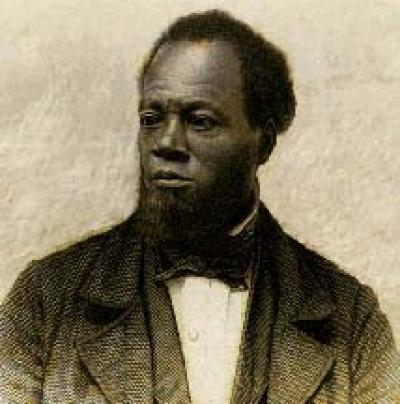Lesson Plan
Created by Sherri Brown, Margaret Reagan, and Chris Sykes.

Grade Level:
5th Grade Level
Duration of Lesson (estimate):
4-5 Days (40 Min. ea)
Content Standards:
S02. People in Societies
B. Explain the reasons people from various cultural groups came to North America and the consequences of their interactions with each other. (03-05)
03. Describe the experiences of African-Americans under the institution of slavery. (05)
04. Describe the waves of immigration to North America and the areas from which people came in each wave. (05)
05. Compare reasons for immigration to North America with the reality immigrants experienced upon arrival. (05)
S07. Social Studies Skills and Methods
A. Obtain information from a variety of primary and secondary sources using the component parts of the source. (03-05)
01. Obtain information from a variety of print and electronic sources and analyze its reliability including:
a. Accuracy of facts; b. Credentials of the source. (05)
02. Locate information in a variety of sources using key words, related articles and cross-references. (05)
03. Differentiate between primary and secondary sources. (05)
B. Use a variety of sources to organize information and draw inferences. (03-05)
04. Read information critically in order to identify:
a. The author; b. The author's perspective; c. The purpose. (05)
Primary Sources Used:
Austin Steward Slave Narrative. Landau, Elaine, Slave Narratives: The Journey to Freedom (Grolier Publishing, New York: 2001).
The complete version can be found here: Austin Steward: Twenty-Two Years a Slave (1857)
Summary of Lesson:
Students will:
1. Read a selected oral history to learn about individual experiences of African Americans in the pre-Civil War era.
2. Use collaborative skills with each other to share their understandings and develop different perspectives on the reading to complete a discussion handout.
3. Interpret primary source oral history document by writing a letter from the point of view of a person living during the pre-Civil War era.
4. Summarize a narrative of former slave.
Pre-Assessment
Have students complete the
and
File
.
Activities:
1. Show the Video: Slave Life (https://vimeo.com/45846758)
2. Students read about
File
and complete the
.
3. Students complete the Artifact Analysis Handout
4. Teacher will summarize the introduction to Elaine Landau’s book, Slave Narrative: A Journey to Freedom. Besides slave narratives, this book also contains a variety of primary source documents including: Portraits, paintings, newspaper advertisements for slave sales, etc. Share some of these sources with students.
5. Distribute excerpts of the slave narrative, Austin Steward, from Elaine Landeu’s book, Slave Narrative: A Journey to Freedom. This book is a copulation of slave narratives, a primary source, which gives accounts of the daily life for slaves, their personal thoughts and motivation, their eventual escape to freedom, and their life as a free person. This excerpt is from Austin Steward’s book, Twenty-two Years a Slave, and Forty Years a Freeman (Rochester NY: William Alling, 1857).
Explain the importance of primary sources to investigate historical events. Discuss the genre of personal narratives and the components. Also, discuss point of view and how narratives are written in first-person as the author writes about his or her experiences.
6. Read the excerpt of Austin Steward’s narrative to the students aloud.
7. Divide students into collaborative groups to review the excerpt and complete the Discussion Handout for their small group. This handout will have questions that students can use in their discussions. They should record each other’s responses and thoughts during the discussion.
8. Bring students back into whole class and discuss their responses.
9. End the discussions and engage the whole class in a dialogue about their perspectives and what they discussed.
10. With the students, generate a list of persons involved in Steward’s live:
- Captain William Helms (owner)
- Susan Steward (mother who was beaten)
- Mrs. Helms (cruel mistress)
Have students record information about each of these persons from class discussion. For students who struggle with copying provide a copy of list with information after discussion.
11. Have students choose one of these persons that were involved in Steward’s life and have them take on that person’s characteristics as they write a letter from their point of view to Steward explaining their position. For example, Capt. Helms could write that Steward is his property and he needs to obey him, he could also write about how he is breaking the law because he is teaching himself to read and therefore deserves his harsh punishment. Steward’s mother could write how he needs to escape from slavery so he can have a better life, etc.
12. Allow students to start composing their letters in the classroom and assist with generating ideas and revising.
13. Assist students in editing and revising letters through a writer’s conference. Allow time for students to publish final copy of their letter. Encourage students to create illustrations of their character based on descriptions in Steward’s narrative.
14. Allow students to share their letters and illustrations.
Post Assessment:
Students complete the L column of the
File
and re-take the
Assessment:
1. Students’ completion of the Discussion Handout.
2. Teachers can also assess student learning by asking leading questions to see if students have gained knowledge of slave life through the reading and discussions.
3. Student created letter from the point of view of person involved in Steward’s life.
Materials Needed:
File
Slave Narrative Activity Handout
File
File
